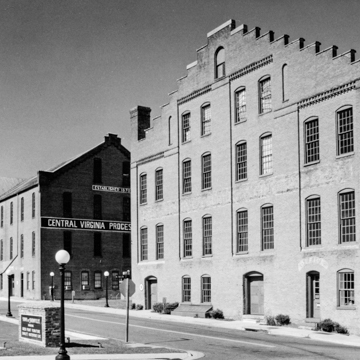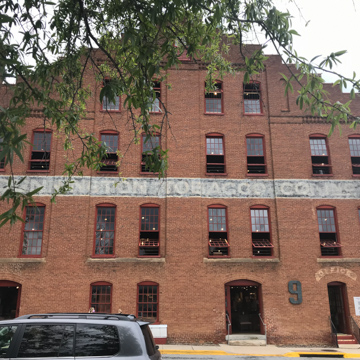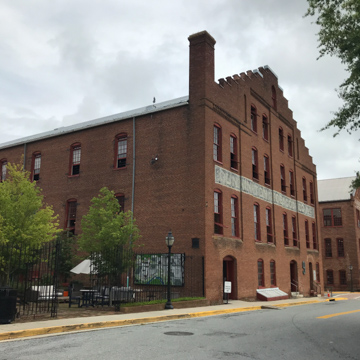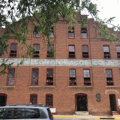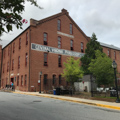These warehouses were the domain of such wealthy tobacco dealers as R. S. Paulett and Walter Grey Dunnington, who maintained a nearly monopolistic hold on leaf grown on southern Piedmont farms. New products, including cigarettes, brought restored prosperity to tobacco dealers in the last decades of the nineteenth century. By 1905, most of Farmville's old frame warehouses had been replaced with brick ones. Tobacco was stored and processed in these warehouses before being sold to manufacturers, many of whom were European. Paulett's and Dunnington's warehouses are the most prominent of the twelve warehouses now used as showrooms by Green Front Furniture. Three stories in height, these handsome brick structures with corbeled and stepped parapets celebrate the wealth extracted from thousands of small red-clay tobacco farms. The interiors have exposed brick walls and unfinished posts carrying heavy bridging beams and joists. Eschewing traditional joinery, the builders used relatively thin joists with X-bracing and common rafter roofs supported by diagonal braces and purlins butted and bolted or toe-nailed together, not tenoned.
You are here
Historic Tobacco Warehouses
If SAH Archipedia has been useful to you, please consider supporting it.
SAH Archipedia tells the story of the United States through its buildings, landscapes, and cities. This freely available resource empowers the public with authoritative knowledge that deepens their understanding and appreciation of the built environment. But the Society of Architectural Historians, which created SAH Archipedia with University of Virginia Press, needs your support to maintain the high-caliber research, writing, photography, cartography, editing, design, and programming that make SAH Archipedia a trusted online resource available to all who value the history of place, heritage tourism, and learning.
















